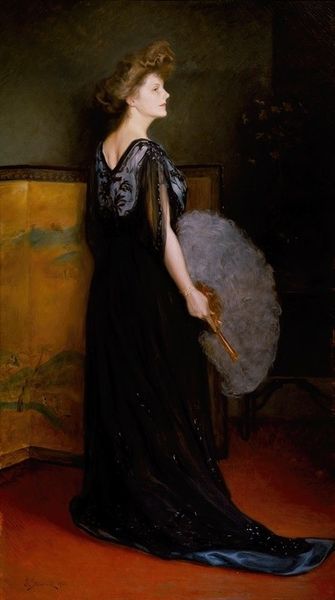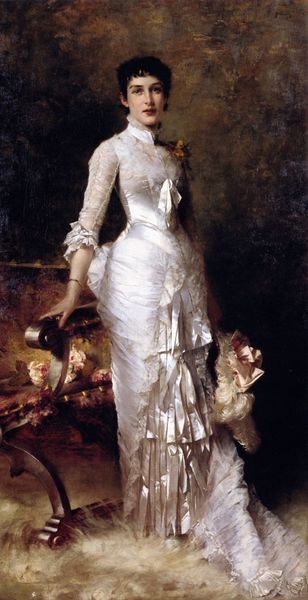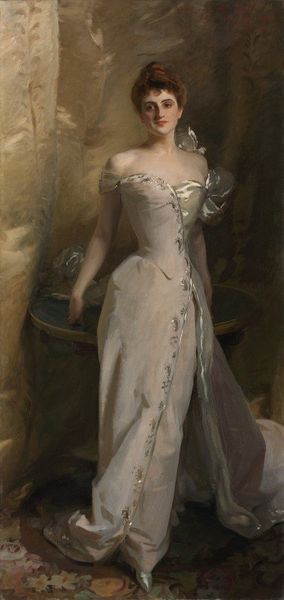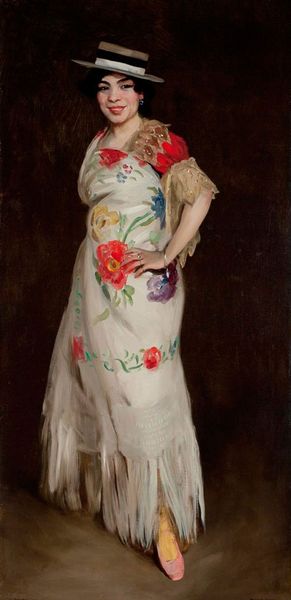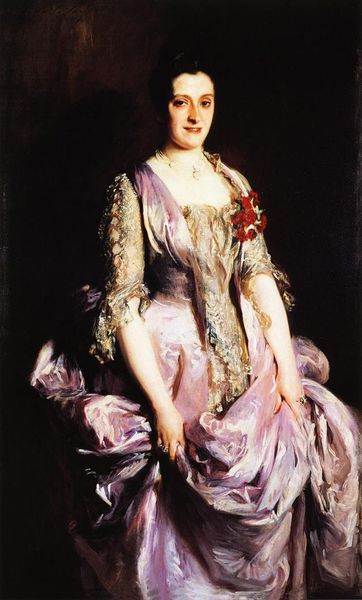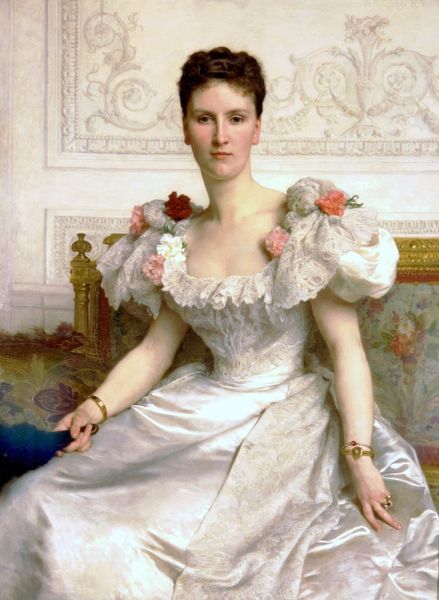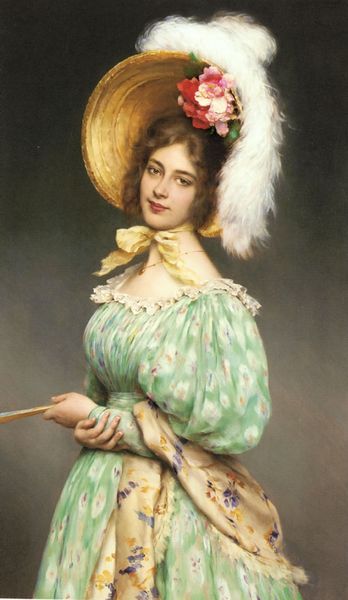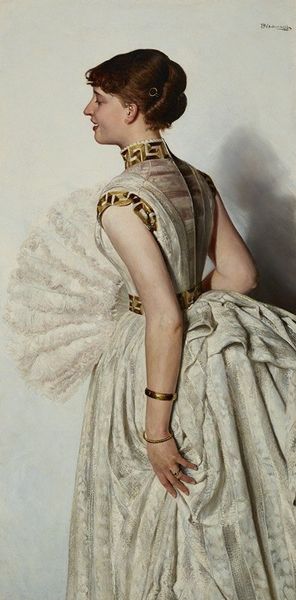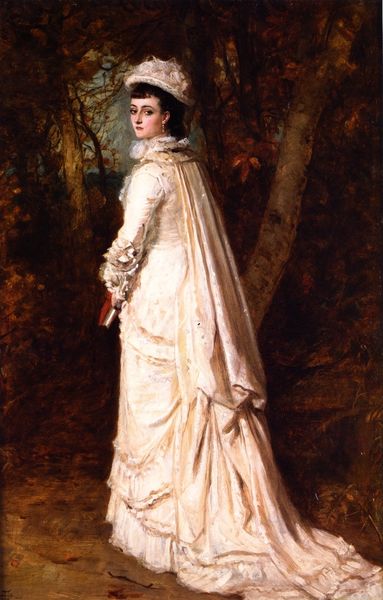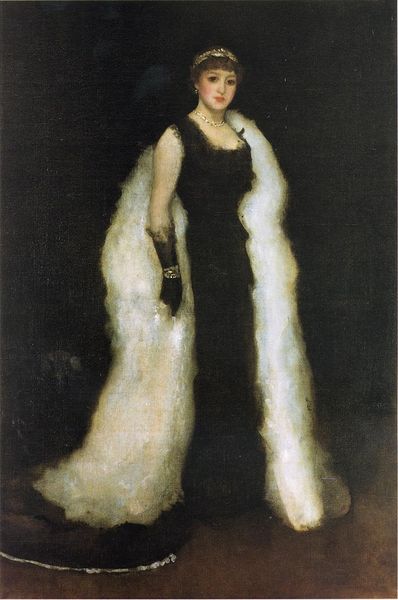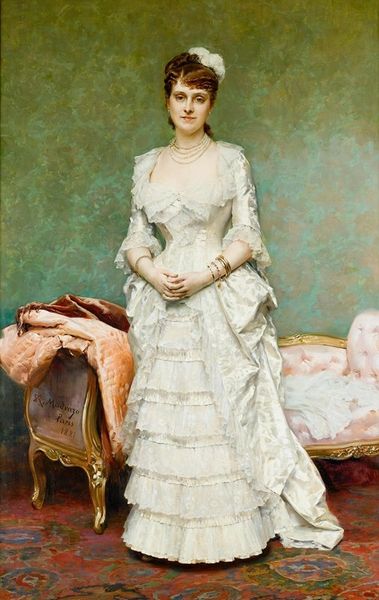
Copyright: Public domain
James Tissot painted this portrait of the Vicomtesse de Montmorand, in France, probably during the 1880s, but its exact date is unknown. It offers us a glimpse into the world of the French aristocracy in the late 19th century. The Vicomtesse is depicted in an elegant white dress with a fur stole, a fashionable symbol of wealth and status. Her refined posture and delicate features suggest a woman of high social standing, who may have been shaped by the institutions of art and culture that reflected the values of the French upper class. Was this artwork commissioned to celebrate a marriage? What social circles did the Vicomtesse move in? Was she a patron of the arts? As historians, we can delve into archives and social records to uncover more about the Vicomtesse de Montmorand's life and the social context in which this portrait was created. Art, ultimately, is a product of its time, reflecting the values, aspirations, and power structures of the society that produced it.
Comments
No comments
Be the first to comment and join the conversation on the ultimate creative platform.
